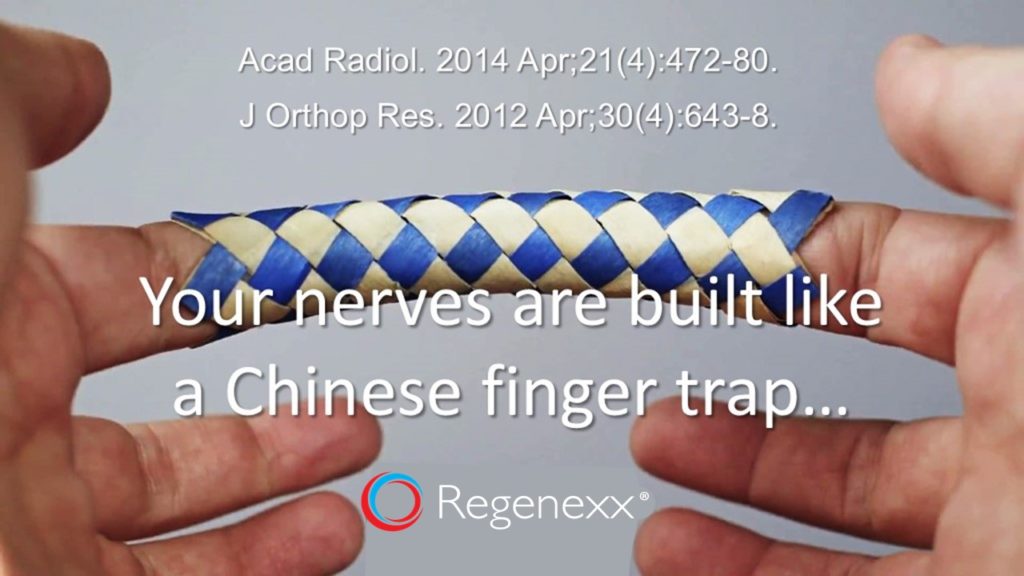Carpal Tunnel Alternative Treatment: Your Nerves Were Made to Move!
Most patients and physicians think of nerves as static and immobile wires that transmit information. However, despite this conceptualization, your nerves were in fact designed to be very stretchy and mobile. In fact, new research is giving us information on which to base a new paradigm of carpal tunnel alternative treatment – it’s all about nerve mobility!
Think for a moment about what nerves are built to do. Yes they carry information to and from the brain and spinal cord and connect any number of sensors or muscles to either perceive the outside world or interact with it, but they do this in a body that’s in constant motion. Go for a walk or a run and the nerves that go from your spinal cord to your toes need to stretch when your leg is fully extended, yet not “bunch up” when your leg is flexed.
To accomplish this, your nerves are stretchy and built a bit like a Chinese finger trap. They can decrease their diameter and alongate when they’re stretched and increase it and shorten when they’re asked to do so. What happens when this elasticity is changed? According to new research, this inflexibility may lie at the heart of diseases like carpal tunnel syndrome. The new research involves two studies that looked at the elasticity of the median nerve in the wrist. The median nerve develops problems in carpal tunnel syndrome and can cause symptoms like numbness or weakness in the thumb area of the hand.
The first study looked at how the nerve was able to deform with pressure-the concept being that a normal nerve should be very stretchy and elastic. Comparing patients without and with carpal tunnel syndrome (CTS), the median nerve was less stretchy in the CTS patients with various wrist movements that would compress the nerve. The next study looked at the movement of the nerve when the fingers were in motion. It found that the CTS patients had more movement of the median nerve with finger movements. How can these results be reconciled? Scarring around the nerve… When a median nerve gets scarred down, it can no longer act as an efficient Chinese finger trap. On the one hand it’s less able to compress with pressure (like our paper with wrist movements which increase compression on the nerve). On the other hand, it’s also more likely to stick to the tendons that must glide past the nerve in the wrist. This leads to the findings of the second study-more motion of the nerve with finger movements. We’ve dealt with both of these issues by ultra-precise use of nerve hydro-dissection using ultrasound. This is the injection of a third generation platelet lysate around the nerve to break up any scar tissue and to provide helpful growth factors to the nerve itself. Using this technique we’ve been able to save many patients from carpal tunnel surgery, which research shows destabilizes the wrist.
The upshot? Your nerves were designed to be mobile and when they get scarred down, their immobility can cause problems in the nerve. As a result, solving issues like carpal tunnel syndrome may be as easy as a precise method of freeing up this scarring from the nerve without the destructive ligament cutting that’s the hallmark of carpal tunnel syndrome surgery.

If you have questions or comments about this blog post, please email us at [email protected]
NOTE: This blog post provides general information to help the reader better understand regenerative medicine, musculoskeletal health, and related subjects. All content provided in this blog, website, or any linked materials, including text, graphics, images, patient profiles, outcomes, and information, are not intended and should not be considered or used as a substitute for medical advice, diagnosis, or treatment. Please always consult with a professional and certified healthcare provider to discuss if a treatment is right for you.
